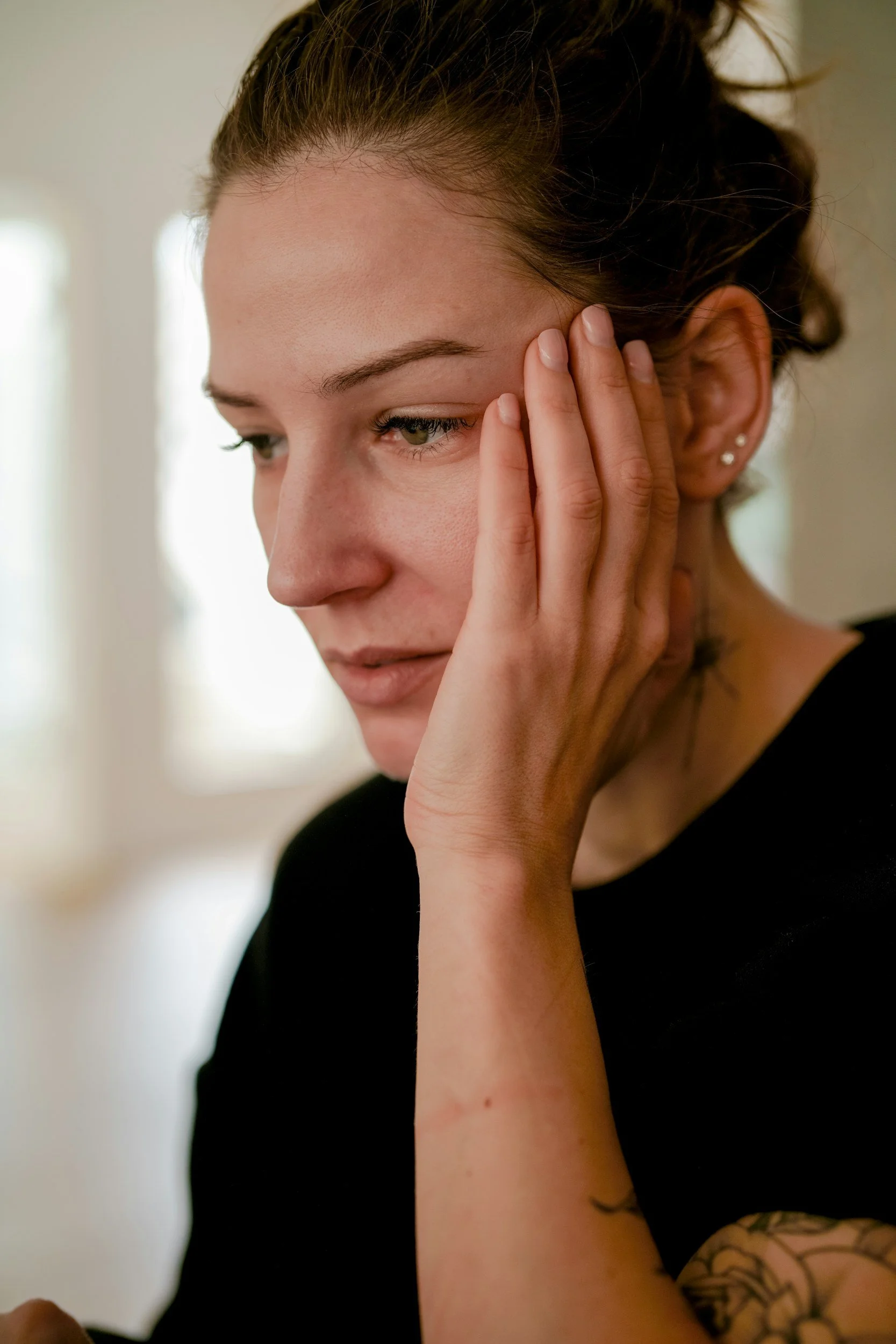Cognitive Behavioral Therapy for
Checking OCD
Checking OCD: a Subtype of OCD
Double-checking to make sure you turned the stove off or locked the door is common. But for those with checking OCD, leaving an appliance on or a door unlocked can feel like a matter of life or death. Double-checking turns into triple-checking, which can turn into compulsive rituals.
It is estimated that about 1 in 100 people living in the United States are struggling with obsessive-compulsive disorder. Checking OCD is a common subtype of this disorder. It exceeds just “worrying” if you left a door unlocked. For some, devoting hours a day to checking is a common occurrence. This form of OCD is thought to be driven by a fear that not checking will somehow cause something bad to happen. People with checking OCD might be scared of causing harm to themselves or to others. They then engage in checking behaviors to assure themselves that harm will not be caused.
There is no explanation for what causes checking OCD. It generally can be thought of as a mix of genetics and environmental experiences, such as physical illness or trauma. Living with this disorder can be debilitating, causing tension in one’s personal, social, and professional life. Though there is no one root source of the problem, checking OCD is highly treatable with the right interventions.
Examples of Checking OCD
The lengths to which people check randomly varies from person to person. Likewise, what people check varies based on the fear that the disorder feeding off of. Some examples of checking OCD are:
Being preoccupied at a social gathering about whether or not you locked your car, leading you to leave the gathering early to check your car.
Worrying about leaving the oven on in your apartment and having to repeatedly check it, making you late for work.
Repetitively thinking about whether or not you turned off a light, making it hard to focus on other tasks.
Seeking reassurance from someone you trust by asking questions such as "Are you sure you saw me lock the door?"
Symptoms of Checking OCD
Checking OCD is characterized by intrusive thoughts that something bad will happen if things are not adequately checked. The potential guilt and shame people with this disorder would feel if something bad were to happen creates intense fear. These fears can then produce an obsessive urge to check things persistently.
Obsessions in Checking OCD
Intrusive thoughts are often uncontrollable. These unwanted thoughts can stem from an unreasonable sense of personal responsibility. Similarly, it can stem from a lack of trust in oneself. It can be easy to fall prey to these obsessions, especially since they feed on people’s worst fears. Examples of obsessions are:
Fear of burning down the house if an appliance is left plugged in or not turned off.
Fear of losing personal items, like a wallet or house keys.
Fear of leaving a house or car door unlocked, allowing a burglar to come in and steal things.
Fear of causing unintentional harm to someone due to carelessness.
Fear of saying or doing anything hurtful or inappropriate.
Compulsions in Checking OCD
Repetitive checking is a defining characteristic of checking OCD. People with checking OCD tend to direct their compulsions toward wherever the fear stems from. If someone is scared that they left the door open, someone might compulsively check the door to make sure it is still locked. By engaging in checking, they experience a relief from anxiety, but this relief is short-lived. Soon, the anxiety will come back, and the temporary relief of the compulsion subsides. Once the cycle of compulsively checking starts, it can be difficult to stop. In some cases, compulsions take hours of a person’s day.
There are many different checking compulsions in this disorder. Here are some examples of compulsions:
Physical compulsions: Physically checking things serves as proof that everything is as it should be. Even if they had just checked something, a person with this form of OCD might go back and recheck repeatedly. Some people with OCD may feel the urge to take videos or pictures of the checking to repeatedly check their checking throughout the day.
Mental compulsions: Just as some people take videos of themselves checking, people can repeatedly replay checking situations in their heads. These mental rituals are, at the very least, distracting and can become emotionally draining.
Seeking reassurance: Some may repeatedly seek reassurance from others to reduce anxiety. Asking for reassurance that they locked a door, or wanting confirmation that nothing bad is going to happen are common in checking OCD. Repeatedly asking for reassurance over time comes at the cost of straining relationships.
The effects of checking compulsions can be both physically and mentally exhausting for people with OCD. If leaving the house will cause an onset of compulsive behavior, some may choose not to leave the house at all. This results in the diminishment of their overall quality of life.
How to Stop Checking Compulsions
CBT for Checking OCD Treatment
Compulsions are only a temporary release from the anxiety. To enact long-lasting change, therapeutic treatment is necessary. While there are a few different treatment options, Cognitive Behavioral Therapy (CBT) is considered the "gold standard" in treatment for OCD. It is estimated that around 80% of clients who undergo CBT interventions show significant improvements in resisting the urge to engage in OCD tendencies, and often have complete remission of the disorder.
CBT is research-based and has been shown through numerous clinical trials to be the most effective form of therapy for many psychological problems, including all types of OCD. Instead of engaging in traditional talk therapy, which is often focused on the past, CBT clients focus on the connection between thoughts, emotions, and behaviors occurring in the present. Through CBT interventions, the client develops powerful skills to permanently short-circuit the patterns that maintain OCD.
Exposure and Response Prevention (ERP) for Checking OCD
Fear is a natural response to a perceived threat, but can often hold us back from our full potential. Living with obsessions tinged with fear can be exhausting but is also highly treatable. Exposure and Response Prevention (ERP) teaches people to face their fears by using concrete coping skills. By repeatedly confronting these obsessions without engaging in compulsions, clients learn on a very profound level to disengage from obsessions and the urge to engage in compulsions. ERP usually includes:
Creating a list of triggering situations, ranked from least to most anxiety-inducing
Working with a therapist on approaching the least challenging situation without engaging in a compulsion.
Developing mastery over that situation with repeated exposure.
, Moving to the next item on the list, which now seems more doable, having mastered the previous situation through exposure.
The main goal of ERP is to learn on an experiential level that compulsions are not necessary and that there are healthier ways of managing distress; anxiety can go away without using compulsions. After working with a trained therapist in ERP, most clients describe the release from struggling with compulsions as liberating.
Mindfulness for Checking OCD
Mindfulness is a helpful tool when paired with other CBT interventions. Mindfulness is the practice of maintaining awareness of the present moment. This can help people relate to obsessions caused by OCD differently. Increased awareness can allow people to view thoughts as merely thoughts, and recognize that compulsion urges are merely mental events and don't need to be acted on. Mindfulness is rooted in acceptance, and when paired with ERP, it can have powerful effects reducing compulsive checking.
Cognitive Restructuring for Checking OCD
What is Cognitive Restructuring? OCD triggers negative thoughts that are often irrational and are fueled by the unique fears of the individual. These cognitive distortions can be clarified with the help of a trained CBT therapist through a process known as cognitive restructuring or cognitive reappraisal. Negative thoughts based on irrational thinking can be replaced with more grounded ways of thinking. Balancing these thoughts takes minimal training, and this can complement treatment for checking OCD.
Thoughts and behaviors are inseparably connected; Changing thoughts can change behaviors. For someone with OCD, this takes the form of second-guessing an obsessive thought or taking a less catastrophic perspective. Less buy-in of obsessions makes them less compelling, diminishing the obsession-compulsion cycle.
Our Treatment of Checking OCD at CBT Los Angeles
Expert Care in Treating OCD in Los Angeles
Living with checking OCD can feel like being stuck in an endless loop, circling the drain. Our therapists at Cognitive-Behavioral Therapy Los Angeles understand that. We believe in the power of Cognitive Behavioral Therapy as the most cutting-edge treatment for a variety of psychological disorders. Our dedicated focus on CBT allows us to provide the highest level of care to every patient, providing evidence-based therapy in Los Angeles.
Mental health and wellness come first to us. At CBT Los Angeles we have trained specialists and experts in the cognitive-behavioral treatment of OCD, all of whom hold a doctoral degree in clinical psychology. Some of our psychologists are faculty at esteemed graduate programs, keeping up with and playing an active role in the most recent research regarding psychological disorders.
High-Quality and Accessible Treatment
Our two offices in Los Angeles are ready to welcome you to make a positive change in your life. Our commitment to excellence stretches not just from the West Side of Los Angeles to the East Side, but anywhere in California. We understand that convenience is key, which is why our mental health professionals provide Telehealth appointments in addition to our Los Angeles treatment centers. Whether you live far away in California or prefer therapy from the comfort of your own home, CBT Los Angeles is ready to help tailor a treatment plan specifically for you.
Break the OCD Cycle Today
Taking time for yourself to regain control of your life can be empowering– and the best way to overcome OCD. We want to assure you that Cognitive Behavioral Therapy Los Angeles is accepting new clients, and we are ready to take that first step with you in breaking the cycle of OCD today.





